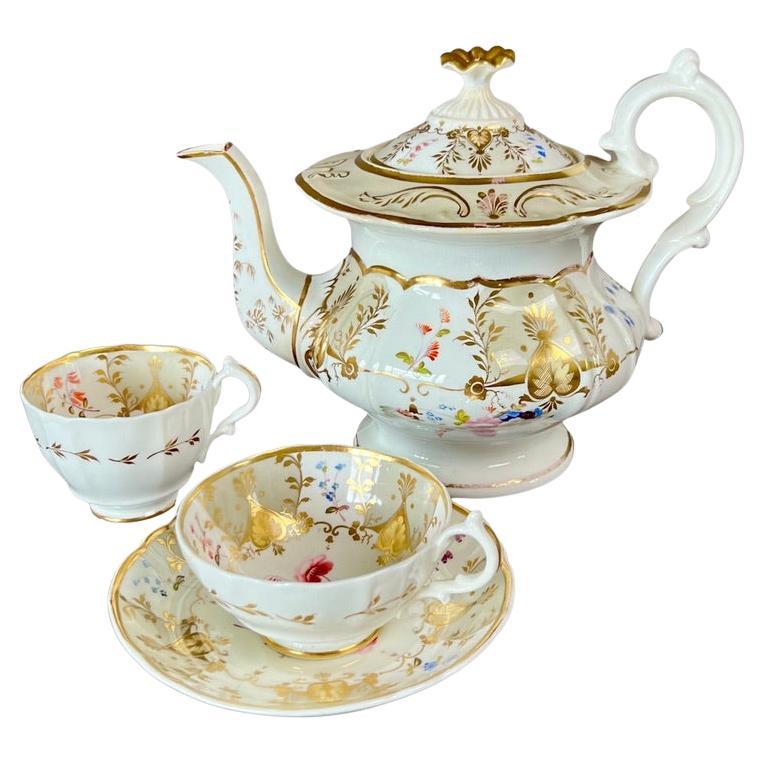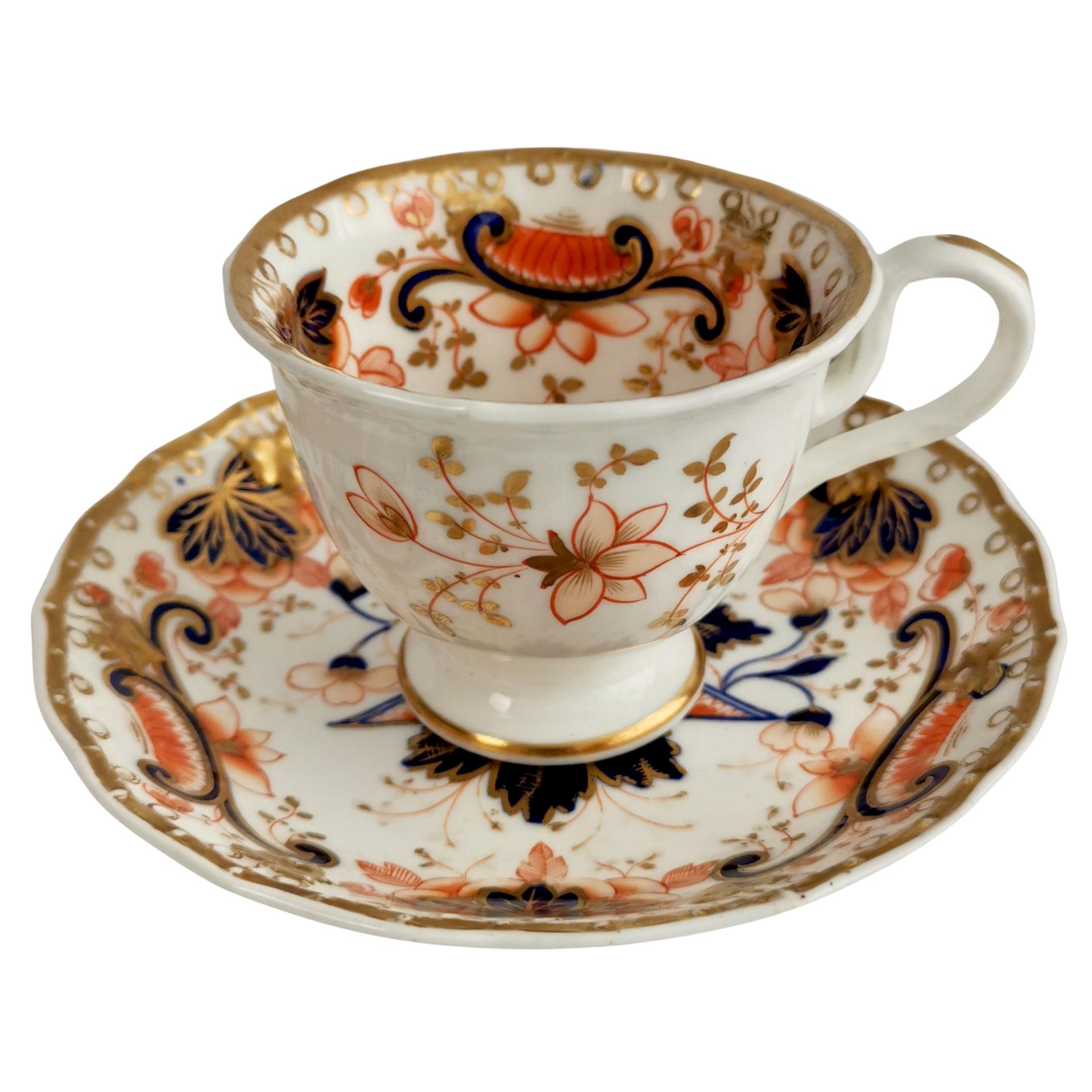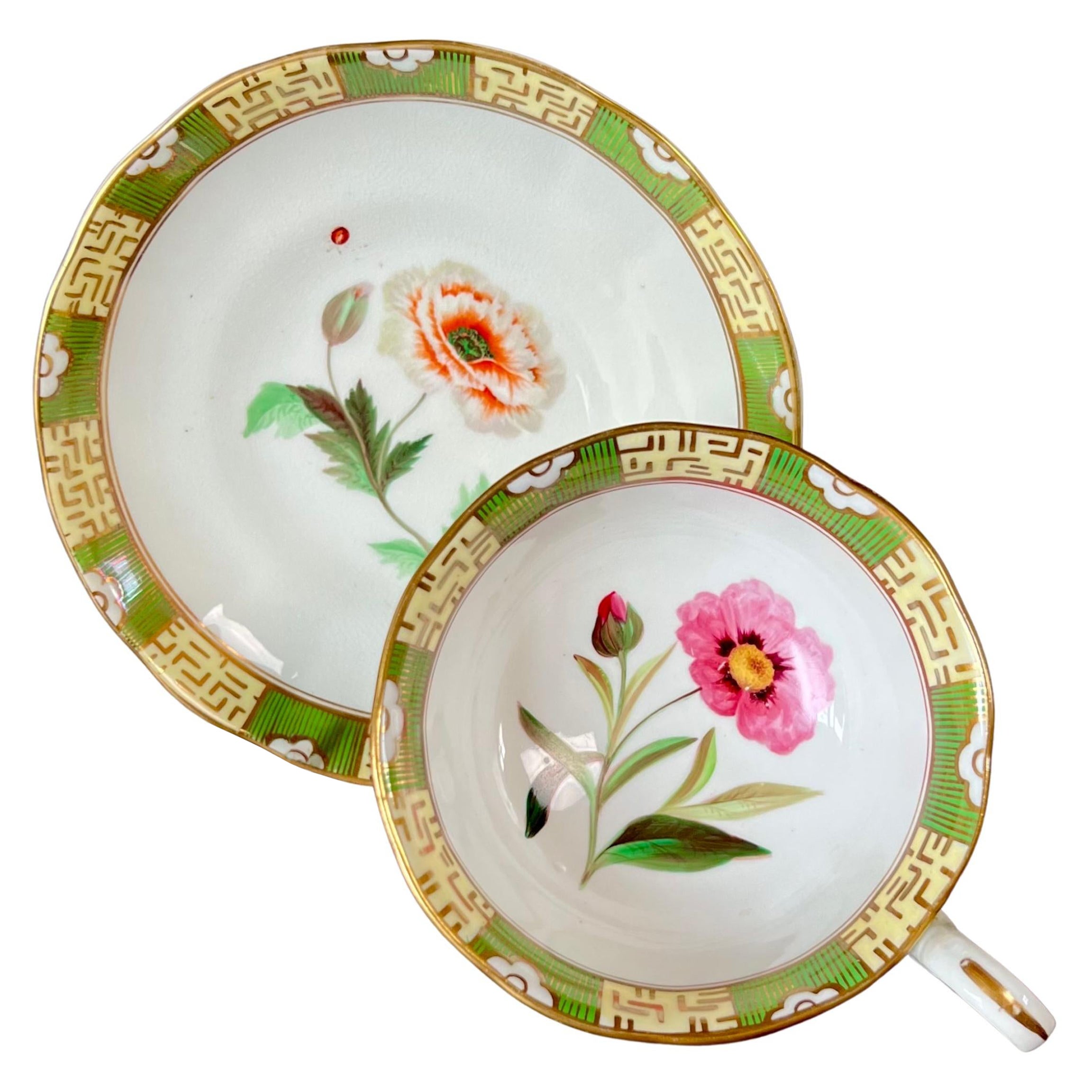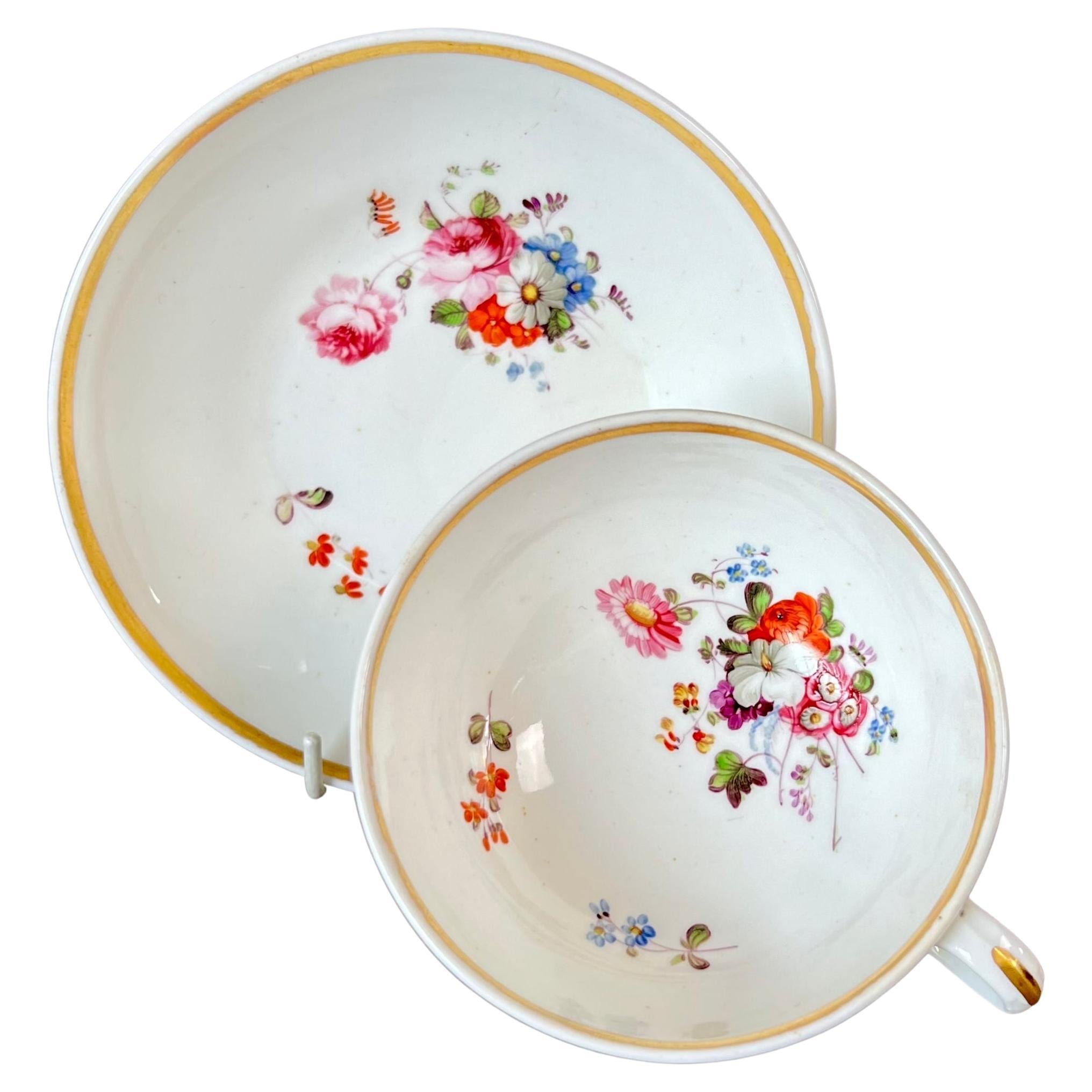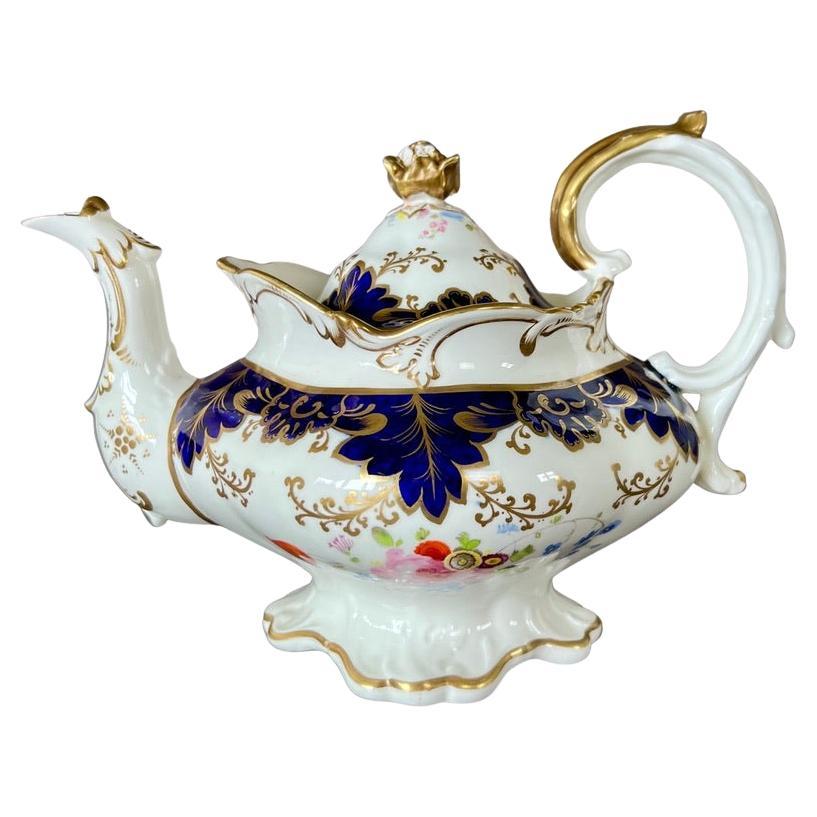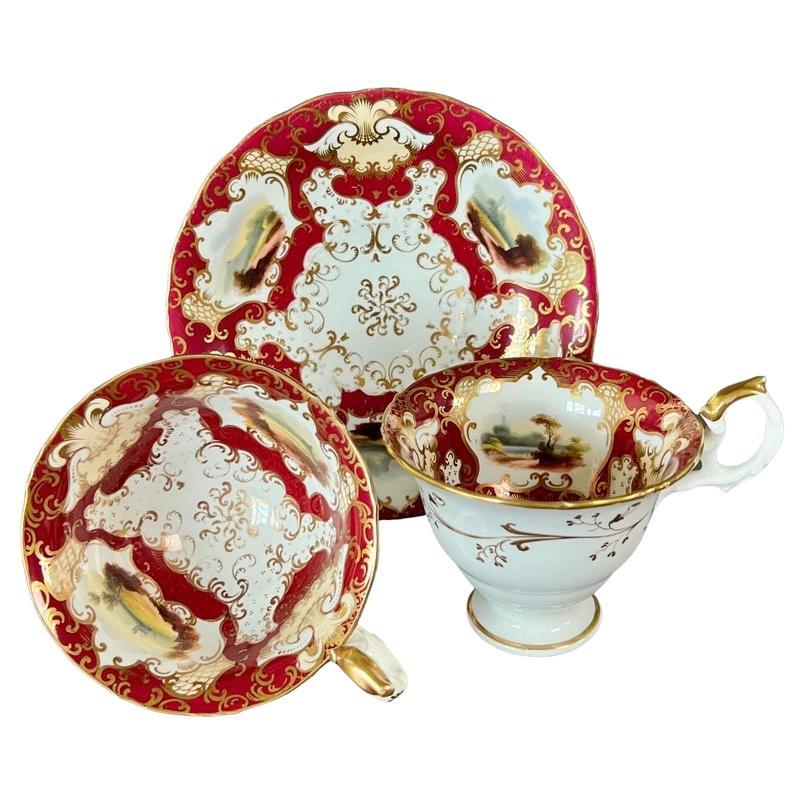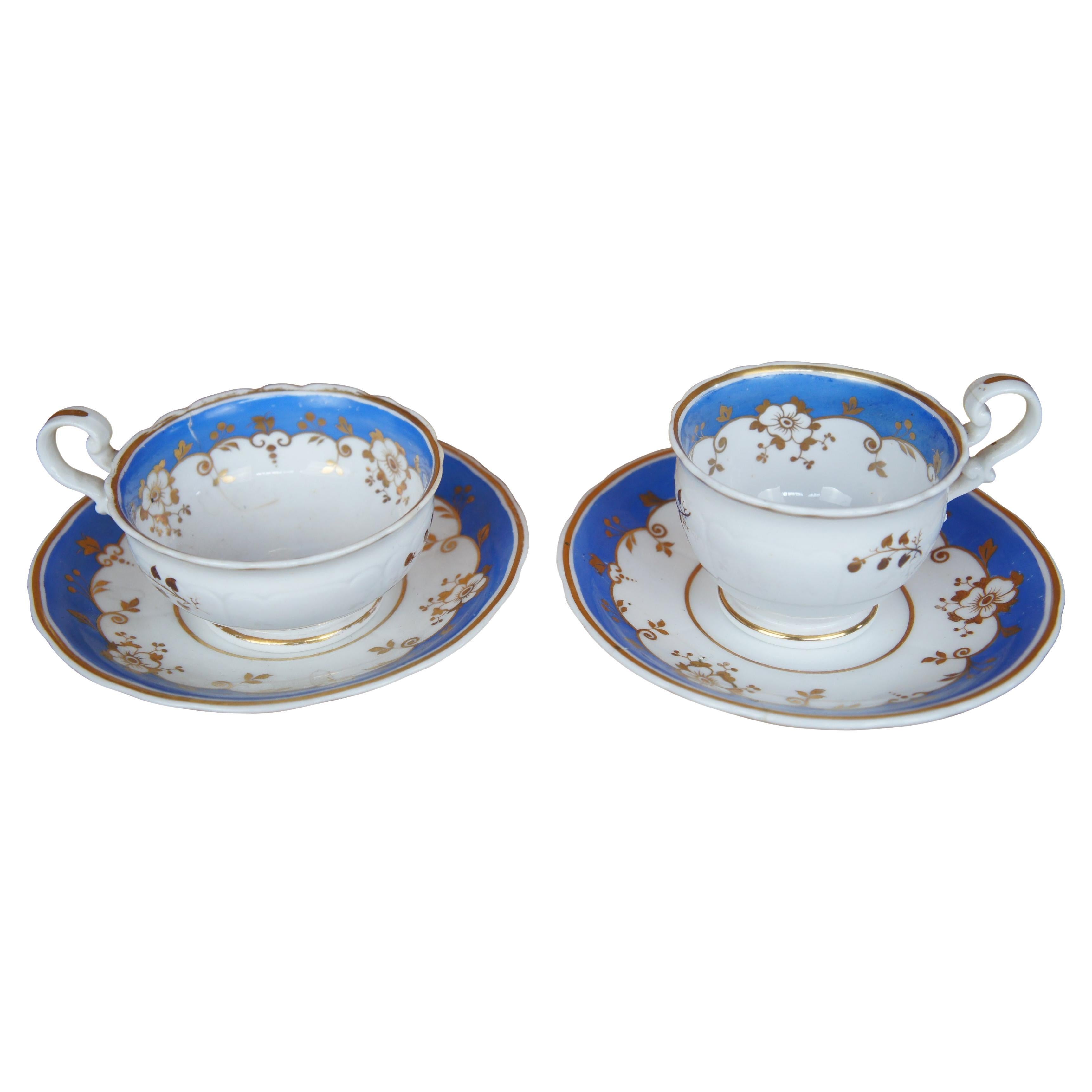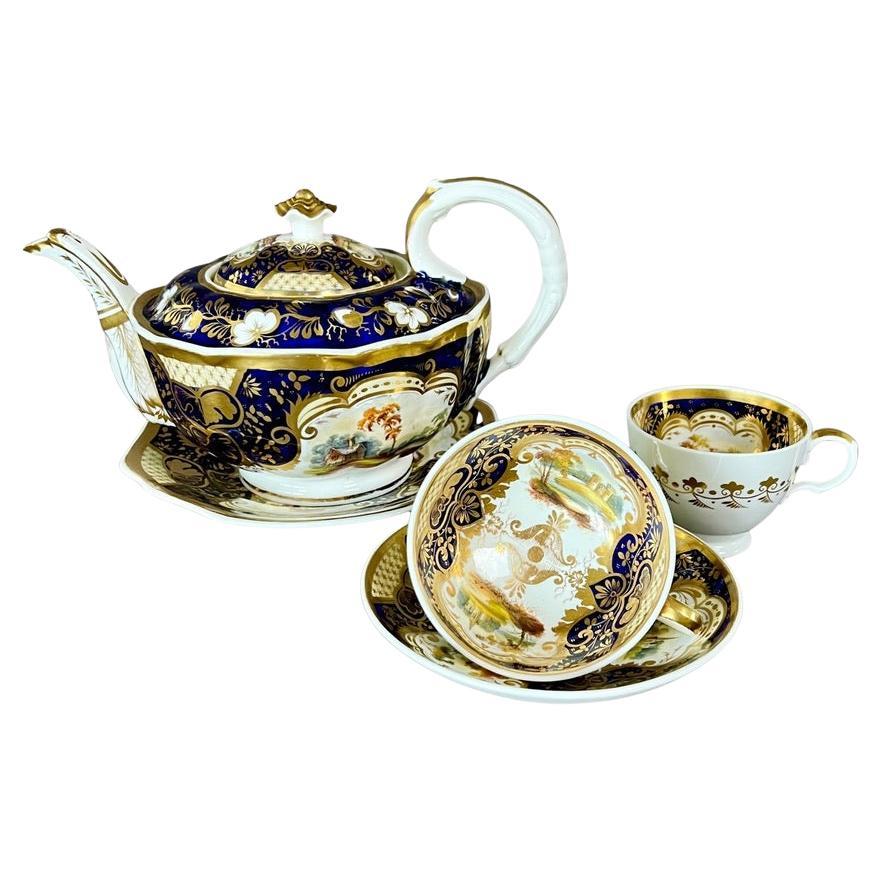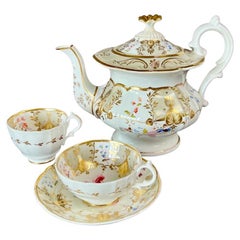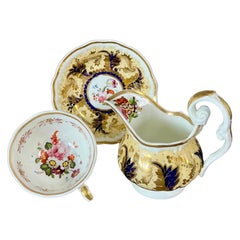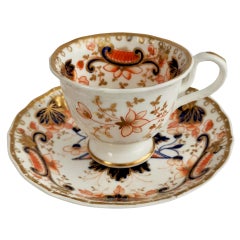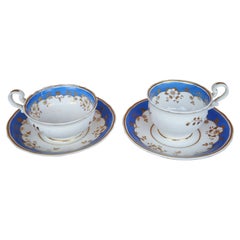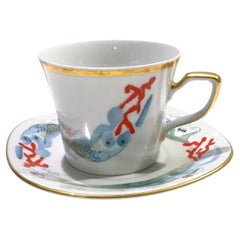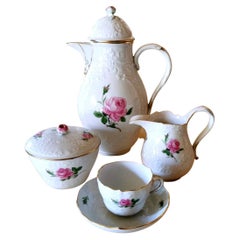
Samuel Alcock Coffee Cup, Pale Yellow, Flowers and Butterflies, ca 1834
View Similar Items
Want more images or videos?
Request additional images or videos from the seller
1 of 16
Samuel Alcock Coffee Cup, Pale Yellow, Flowers and Butterflies, ca 1834
About the Item
- Creator:Samuel Alcock & Co. (Maker)
- Dimensions:Height: 1 in (2.54 cm)Width: 1 in (2.54 cm)Depth: 1 in (2.54 cm)
- Sold As:Set of 2
- Style:Victorian (Of the Period)
- Materials and Techniques:
- Place of Origin:
- Period:
- Date of Manufacture:circa 1834
- Condition:Wear consistent with age and use. excellent, some stacking wear.
- Seller Location:London, GB
- Reference Number:Seller: MP-ALC811stDibs: LU4805137165262
About the Seller
5.0
Gold Seller
These expertly vetted sellers are highly rated and consistently exceed customer expectations.
Established in 2016
1stDibs seller since 2019
208 sales on 1stDibs
Typical response time: 1 hour
More From This SellerView All
- Samuel Alcock Solitaire Tea Set, Beige, Pale Yellow and Flowers, ca 1833By Samuel Alcock & Co.Located in London, GBA solitaire tea set consisting of a teapot with cover and a trio consisting of a teacup, a coffee cup and a saucer, in “rustic loop” shape, with beige ground with rich pale yellow an...Category
Antique 1830s English Rococo Revival Tea Sets
MaterialsPorcelain
- Samuel Alcock Teacup and Milk Jug, Pale Yellow, Gilt and Flowers, ca 1824By Samuel Alcock & Co.Located in London, GBA teacup and saucer with milk jug in the “melted snow” shape with double drop handles, pale yellow ground with rich gilt and cobalt blue acanthus pattern and finely painted flower re...Category
Antique 1820s English Regency Tea Sets
MaterialsPorcelain
- Samuel Alcock Porcelain Coffee Cup, Orange Imari Flowers, Rococo Revival ca 1830By Samuel Alcock & Co.Located in London, GBThis is a beautiful coffee cup and saucer made by Samuel Alcock around 1830, which was the Rococo Revival era. The set is decorated with a bold Imari pattern and has a "ring-moulded" shape. Samuel Alcock was one of the many potters in Staffordshire such as Spode, Coalport, H&R Daniel and many others during the 1830s and 1840s. He was perhaps not the most well-known of potters but produced very high quality wares and original designs, often standing out for their bright choice of colours and beautiful shapes. The Alcock factory is not well documented so although they had a huge output, items are often mis-identified and we don't know much about the production process of artists, even though the wares have a very high quality that equals that of the more well known factories. The Rococo style was originally a style of the 18th Century. After the Baroque style, which was highly symmetrical and well-designed as it aimed to express the perfection of God, the Rococo style was a reaction that expressed the unpredictability and flow of nature. "Rococo" is derived from the French word "rocaille", which stands for a mass of pebbles that are self-organised in a completely unpredictable mess, for instance on the beach or in the mountains. Rococo moved away from the stranglehold that religion had on the arts: it was capricious, asymmetrical, charming and worldly. As Europe got mired in various wars between Germany, France and Britain, the general style got much more austere again and people embraced neo-classicism. But in the 1830s and 1840s, the seemingly unlimited fortunes of the Industrial Revolution sparked a revival of Rococo, once again creating natural shapes that are not always symmetrical and don't particularly make rational sense. This coffee cup can...Category
Antique 1830s English Rococo Revival Tea Sets
MaterialsPorcelain
$264 Sale Price / set20% OffFree Shipping - Samuel Alcock Teacup, Japanese Green Border, Flowers and Ladybird, ca 1843By Samuel Alcock & Co.Located in London, GBA teacup and saucer with ring handle, with green and pale yellow ground in Japanese style, and beautiful flower studies in the centre of each item and a little ladybird on the saucer...Category
Antique 1840s English Victorian Tea Sets
MaterialsPorcelain
- Samuel Alcock Porcelain Teacup, White with Flower Sprays, ca 1823By Samuel Alcock & Co.Located in London, GBA teacup and saucer in the “half orange” shape, white with simple gilt rim and beautiful hand painted flower sprays Pattern unknown but similar to 1082 Year: ca 1823 Size: cup diameter 10cm (4”), saucer diameter 14.2cm (5.5”) Condition: excellent, some rubbing to gilt There are several items available in this design, please see group image and ask for more info if interested. The Samuel Alcock factory was operative in Staffordshire between 1822 and 1856, after which it was bought by Sir James Duke and Nephews. The factory started as a partnership between the young Samuel Alcock and the older Ralph Stevenson, who provided the factory and capital. Alcock quickly took the factory to great heights, building one of the biggest factories of its time. Alcock jumped on the new Rococo Revival fashion and served a huge new middle class market. The reason we now don't hear much about Samuel Alcock porcelain...Category
Antique 1820s English Regency Tea Sets
MaterialsPorcelain
- Samuel Alcock Porcelain Teapot, Blue, Gilt and Flowers, Rococo Revival ca 1837By Samuel Alcock & Co.Located in London, GBA teapot with cover in the “rustic bean” shape, cobalt blue ground with gilt acanthus motif and finely painted flower posies on the belly of the teapot Pattern 5782 Year: ca 1837 Si...Category
Antique 1830s English Rococo Revival Tea Sets
MaterialsPorcelain
$600 Sale Price20% OffFree Shipping
You May Also Like
- 2 Antique 19th Century English Samuel Alcock Blue Gold Floral Cups & SaucersBy Samuel Alcock & Co.Located in Dayton, OH"Four piece set of antique mid 19th century Samuel Alcock porcelain tea / coffee cups and saucers featuring turquoise blue with florals and gold gilding. Samuel Alcock (1799–1848) was a leading pottery manufacturer who operated as Samuel Alcock & Co in Burslem, Staffordshire from 1828 to 1859. They were especially noted for ""picture jugs"" modelled and moulded in relief in various ceramic materials, a popular type of object in these years. Samuel Alcock & Co. Alcock was born in Kingsley, Staffordshire. He was the youngest of the nine children of Thomas (1746–1816) and Catherine Alcock (1756–1838). Though from a farming background, he developed an interest in commerce after working with his uncle Joseph Locker, a grocer, tea dealer, provision dealer, chandler and banker of the Market Square, Hanley. His introduction to pottery came when he embarked upon a partnership with Ralph Stevenson of Cobridge, Staffordshire. In 1828, Alcock developed his own business and began work on the Hill Top site in Cobridge. By the 1830s Stevenson employed 600 people at his works. In 1839 he completed work on a large factory, built in the Venetian style, on the junction of Westport Road and Greenhead Street. In November of that year a party to celebrate the opening was held at the George Hotel...Category
Antique 19th Century Victorian Tea Sets
MaterialsPorcelain
- Porcelain Coffee Cup and Saucer "Sirenas" Designed by Dalí, N°520/1000By Salvador DalíLocated in Paris, FRWonderful Porcelain Coffee cup and saucer "Sirenas peinadas con coral and hormiga" by Salvador Dalí. The famous surrealist artist created this model in 1977 with mermaids, red vivid corals and small ants on a white background. Each piece has a gold rim on the edges giving a very luxurious aspect. Limited edition made of German porcelain produced by the Manufactory Schirnding...Category
Late 20th Century German Porcelain
MaterialsPorcelain
$333 Sale Price / item20% Off - Meissen Porcelain Pink Roses Coffee Service and Embossed Decorations '11 Cups'By Meissen PorcelainLocated in Prato, TuscanyWe kindly suggest you read the whole description, because with it we try to give you detailed technical and historical information to guarantee the authenticity of our objects. Rare Meissen porcelain coffee service in Biedermeier style; the set consists of a teapot, a sugar bowl, a milk jug, and 11 cups with plate; the various pieces are made of fine hand-painted hard white porcelain with the "Pink Roses" decoration enriched on all items with sumptuous unpainted relief decorations. Unlike the simple and quite common "Pink Roses", this model is very rare, prestigious, and sought after, therefore even more expensive; in fact, the objects with this relief decoration, much more particular and detailed than others, were fired three times, while those with only the "Pink Roses" decoration only twice. Moreover, the execution of this ornamental motif with delicate and graceful flowers was entrusted only to the most experienced and skilled painters, those in possession of the prestigious diploma obtained at the "School of Drawing of Meissen" established since 1764. The knobs of the teapot and sugar bowl represent two harmonious and graceful rosebuds, also handmade; the edges of the cups and saucers are scalloped and finished with pure gold as well as the other decorations of the teapot and sugar bowl. All pieces bear the original Meissen trademark (two crossed swords) and from the enclosed list it can be stated with certainty that our service was produced between 1934 and 1944; moreover, on the objects the model is handwritten (61/106), this wording makes the artifacts even more precious and appreciated as they preserve all the characteristics of the author's calligraphy. Meissen porcelain was created in the castle of Albrechtsburg, in Meissen, a small town in Saxony near Dresden, in 1710, at the behest of Augustus the Strong (1670-1733), Prince-Elector of Saxony and King of Poland, who wanted to start production after the studies and experiments of his alchemist Bottger. Bottger discovered the formula for porcelain, in fact at that time, only the Chinese and Japanese had the recipe to create this wonderful material; Meissen was, therefore, the first porcelain produced in Europe! Bottger never revealed his formula to anyone, only a certain stage was known to the workers; we do not know, even today, in what proportions the different components are mixed; this is the great secret that allowed the famous brand to be considered the best in the world, Meissen porcelain is given the nickname of "white gold"! Through the years, Meissen has perfected its hard-paste products with high-temperature firing during its glazing. Meissen's porcelain patterns have been copied by many other manufacturers around the world such as Royal Copenhagen, Dresden, Herend, and many others, but Meissen's porcelain glaze maintains its quality over time and is superior to all (plates will not scratch with prolonged use of cutlery!). This is why even old Meissen...Category
Mid-20th Century German Biedermeier Porcelain
MaterialsPorcelain
$4,832 Sale Price / set20% Off - Corrispondenze, Six Contemporary Decorated Coffee Cups with PlatesBy Vito NestaLocated in Milano, LombardiaVito Nesta Grand Tour's "Corrispondenze" collection is a portrait of what we carry with us after every journey we make in the world. Images, colo...Category
2010s Italian Porcelain
MaterialsPorcelain
- Pompei, Six Contemporary Decorated Coffee Cups with PlatesBy Vito NestaLocated in Milano, LombardiaThe porcelain collection Pompei by Grand Tour By Vito Nesta brings the Grottesche wall decoration back to life in a contemporary key. Ancient designs are taken and declined on the di...Category
2010s Italian Porcelain
MaterialsPorcelain
- Richard Ginori Designer Italian Coffee or Tea Cup and Saucer in Green and GoldBy Richard GinoriLocated in New York, NYA beautiful Italian white porcelain with emerald green and gold coffee or tea cup and saucer by designer Richard Ginori, circa mid-20th century, Italy. Colors include Emerald green, ...Category
Mid-20th Century Italian Classical Roman Porcelain
MaterialsGold
$270 Sale Price40% Off
Recently Viewed
View AllMore Ways To Browse
Eye Glasses Rare
Chinese Glass Fired Signs
Chrysanthemum Tea
Tiffany Sterling Silver Tea Coffee
Antique Bamboo Tea
Denmark Silver Teapot
Flora Danica Cup And Saucer Tea
Teapot Stand With Burner
Tea Set Of 6
Limoges Creamer
6foot Sugar Kettles
Fitz And Floyd Vintage Teapots
Meissen Hausmaler
Pink And Gold Tea Set German
Salins Studio France
Adderley China
Capodimonte Coffee Set
Dutch Pewter Tea Set
